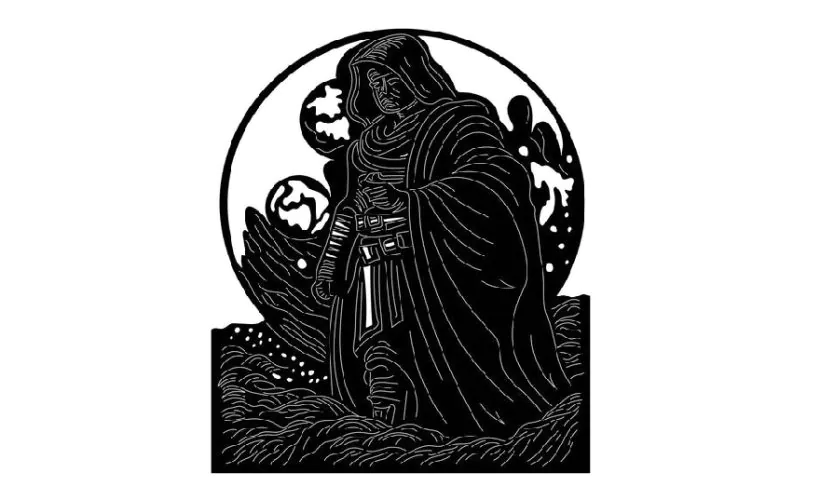Understanding DXF Files: The Ultimate Guide to DXF Download and Usage
In the realm of digital design and manufacturing, DXF files have become a cornerstone for professionals and hobbyists alike. Whether you’re an architect, engineer, or DIY enthusiast, understanding DXF files and how to effectively utilize them can significantly enhance your projects. This blog will delve into what DXF files are, their applications, and how to find and use DXF downloads effectively.
What are DXF Files?
DXF, or Drawing Exchange Format, is a file format developed by Autodesk for enabling data interoperability between AutoCAD and other software applications. Introduced in 1982, DXF files allow for the sharing of drawings and designs across different platforms, making them a vital tool in various industries, including architecture, engineering, and manufacturing.
Key Features of DXF Files
- Vector Graphics: DXF files store vector graphics, which means they represent images using mathematical equations rather than pixels. This allows for high-quality scaling without loss of resolution, making them ideal for detailed designs.
- Compatibility: DXF files are compatible with a wide range of CAD software, including AutoCAD, SolidWorks, and CorelDRAW. This compatibility makes it easy to share designs across different platforms and applications.
- Text and Metadata: In addition to graphical data, DXF files can also contain text annotations and metadata, providing context and additional information about the design.
- Layering: DXF files support multiple layers, allowing designers to organize their work effectively. This feature is particularly useful for complex projects that require different elements to be separated for clarity.
Applications of DXF Files
DXF files are used in various fields, each benefiting from the format’s versatility and precision. Here are some common applications:
1. Architectural Design
Architects frequently use DXF files to create detailed floor plans, elevations, and sections. The ability to share these files with clients and contractors ensures that everyone is on the same page during the design and construction process.
2. Engineering
In engineering, DXF files are used to create schematics, technical drawings, and models. The precision of vector graphics allows engineers to produce accurate representations of components and systems.
3. Manufacturing and CNC Machining
DXF files are essential in the manufacturing sector, particularly for CNC (Computer Numerical Control) machining. Manufacturers can use DXF downloads to program CNC machines, enabling them to cut, engrave, or shape materials with high accuracy.
4. Graphic Design
Graphic designers utilize DXF files for creating logos, illustrations, and other visual elements. The scalability of vector graphics ensures that designs maintain their quality across various applications, from print to digital.
5. Laser Cutting and Engraving
Laser cutting services often require DXF files to produce intricate designs on materials like wood, acrylic, and metal. The precision of DXF files allows for detailed cuts and engravings, making them a favorite among makers and artisans.
How to Download DXF Files
Finding and downloading DXF files is relatively straightforward, thanks to the abundance of resources available online. Here’s a step-by-step guide to help you navigate the process:
Step 1: Identify Your Needs
Before searching for DXF download, determine what type of design or drawing you need. Are you looking for architectural plans, engineering schematics, or decorative patterns? Knowing your requirements will help you find the most relevant files.
Step 2: Search for Reliable Sources
There are numerous websites and platforms where you can find DXF files. Some popular options include:
- CAD Libraries: Websites like CADdetails and CADblocks offer a wide range of DXF files for various applications.
- Design Marketplaces: Platforms like Etsy and Creative Market often feature designers selling DXF files for crafts, laser cutting, and more.
- Open Source Repositories: Websites like GitHub may have repositories containing free DXF files shared by the community.
Step 3: Check File Quality
When downloading DXF files, it’s essential to ensure that the files are of high quality. Look for files that are well-documented and come from reputable sources. Reading user reviews and checking ratings can help you gauge the quality of the files.
Step 4: Download the File
Once you’ve found a suitable DXF file, follow the website’s instructions to download it. Most sites will provide a direct download link, and some may require you to create an account or provide an email address.
Step 5: Open and Edit the DXF File
After downloading the DXF file, you can open it using compatible CAD software. Programs like AutoCAD, DraftSight, and Inkscape allow you to view, edit, and manipulate the file as needed.
Tips for Working with DXF Files
To make the most of your DXF downloads, consider the following tips:
1. Familiarize Yourself with CAD Software
Understanding how to navigate and use CAD software is crucial for working with DXF files. Take the time to learn the basics of the software you choose, as this will enhance your ability to edit and customize designs.
2. Utilize Layers Effectively
Make use of the layering feature in DXF files to organize your designs. This will help you manage complex projects and make it easier to edit specific elements without affecting the entire drawing.
3. Save Backups
Always save backups of your original DXF files before making significant changes. This practice ensures that you can revert to the original design if needed.
4. Explore Online Communities
Join online forums and communities related to CAD and design. Engaging with others can provide valuable insights, tips, and resources for working with DXF files.
Conclusion
DXF files are an invaluable resource for anyone involved in design, engineering, or manufacturing. Their versatility, precision, and compatibility with various software make them a go-to format for sharing and creating intricate designs. By understanding how to effectively download and utilize DXF files, you can enhance your projects and streamline your workflow. Whether you’re an experienced professional or a DIY enthusiast, embracing the power of DXF files will undoubtedly elevate your creative endeavors. So, start exploring the world of DXF downloads today and unlock new possibilities for your designs!













